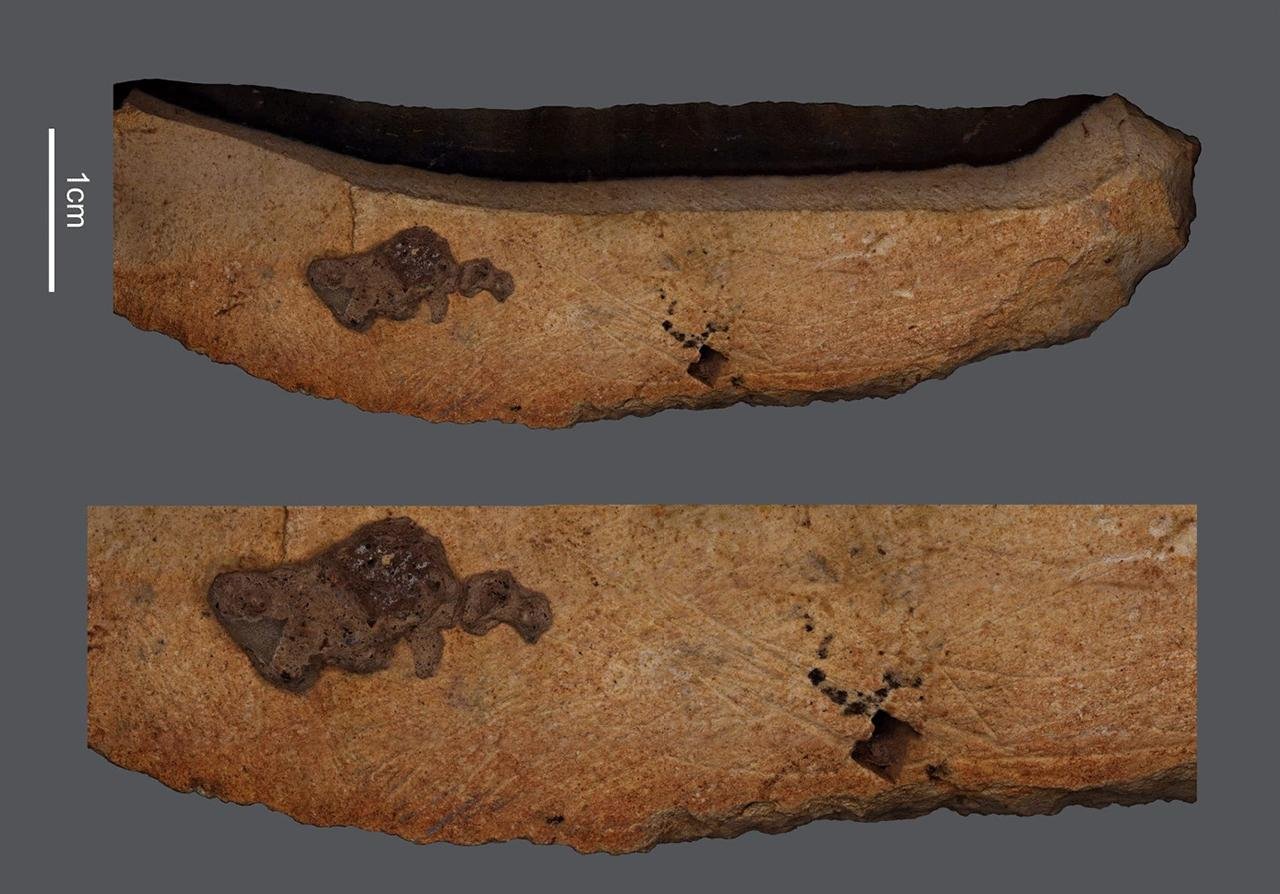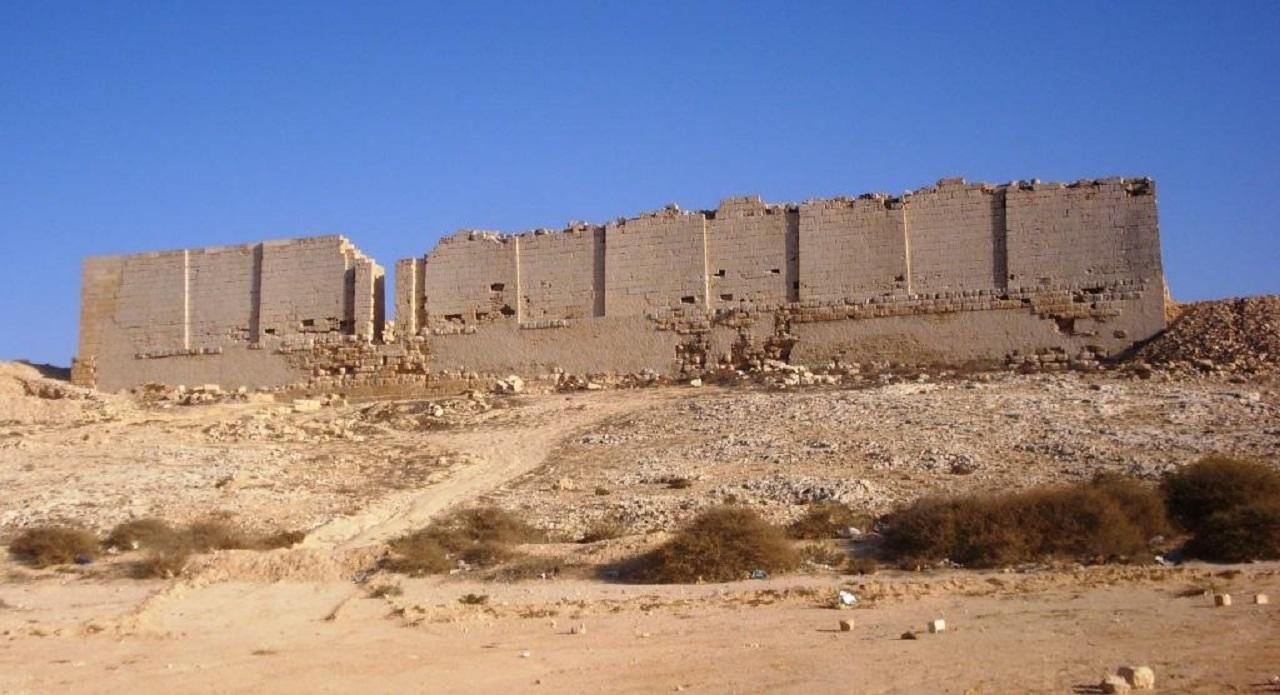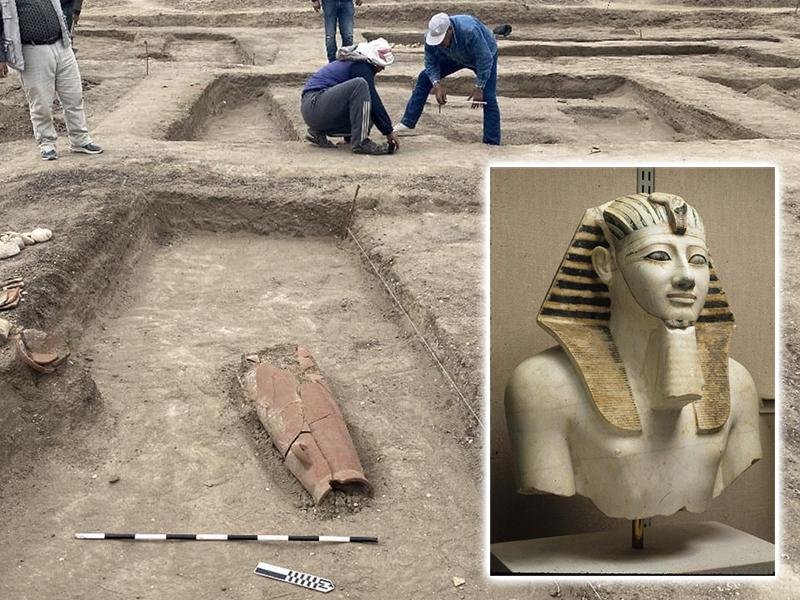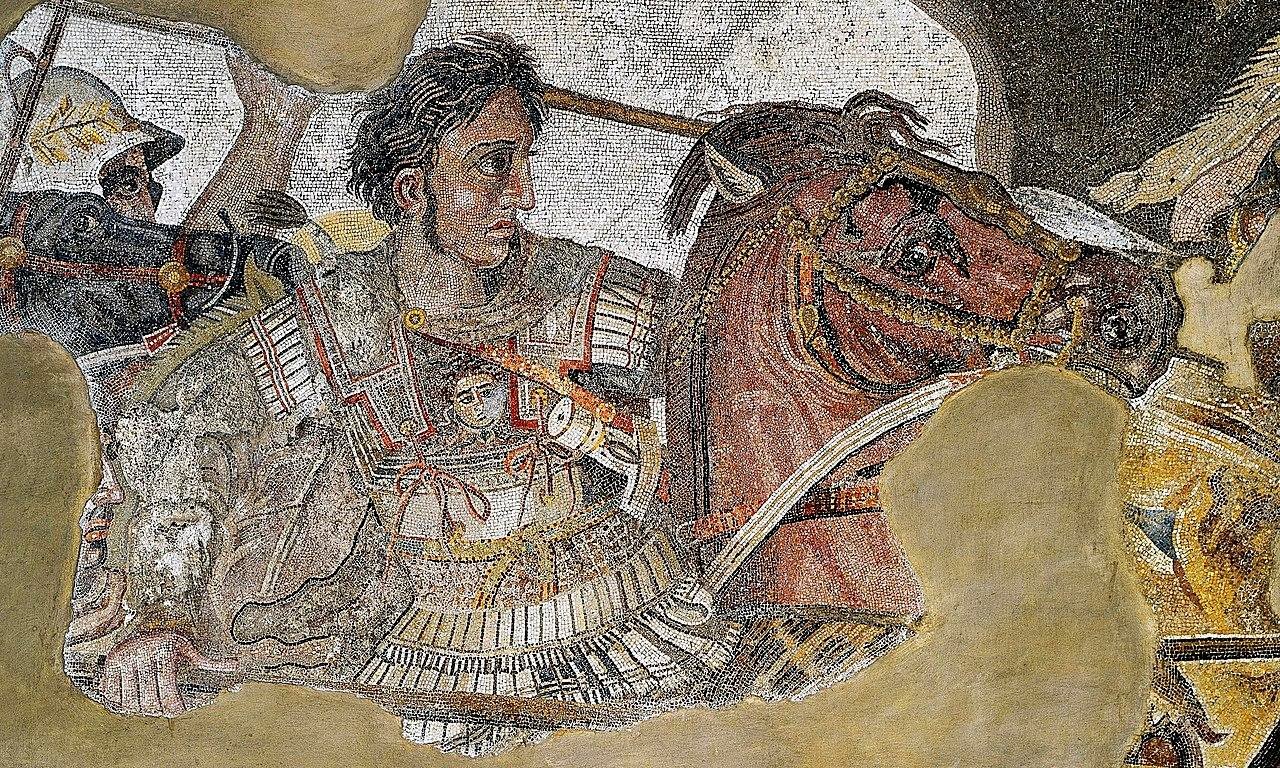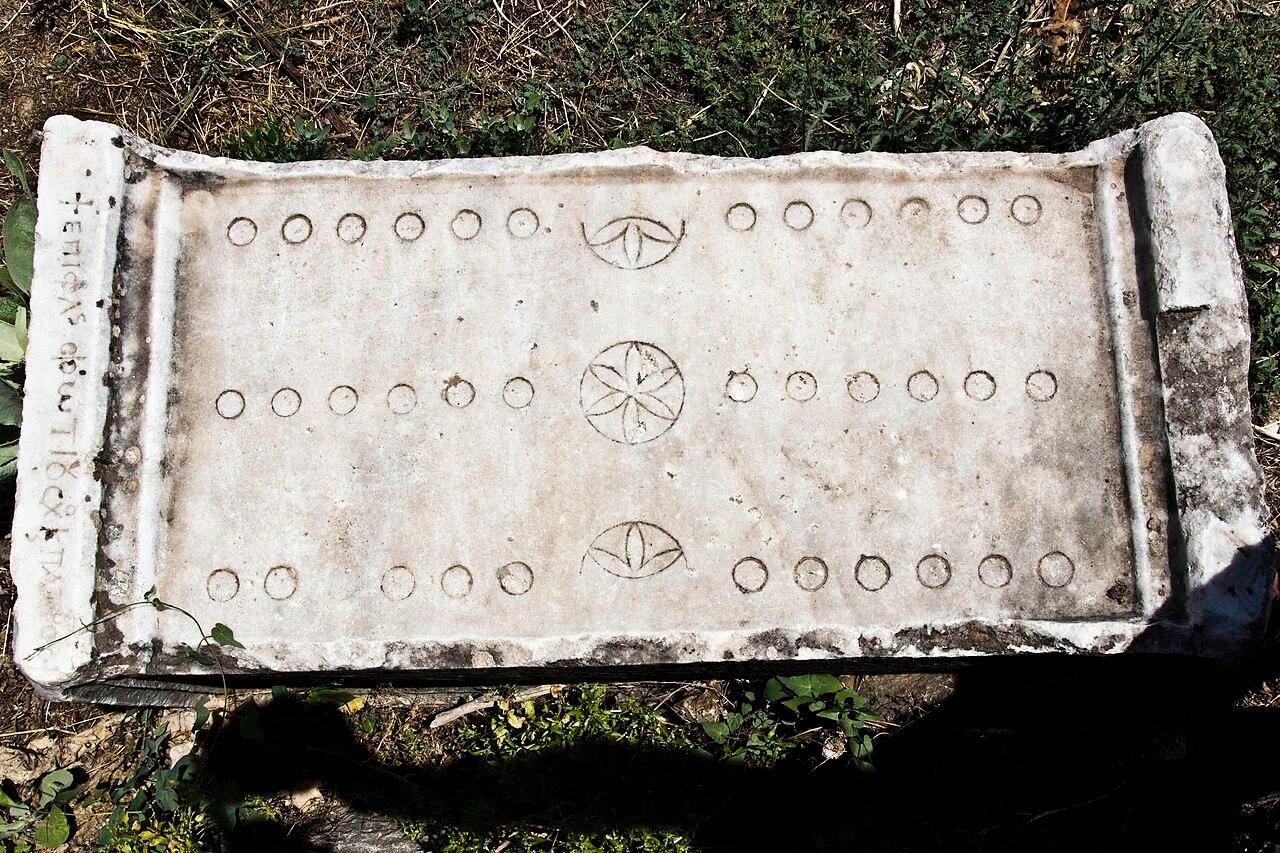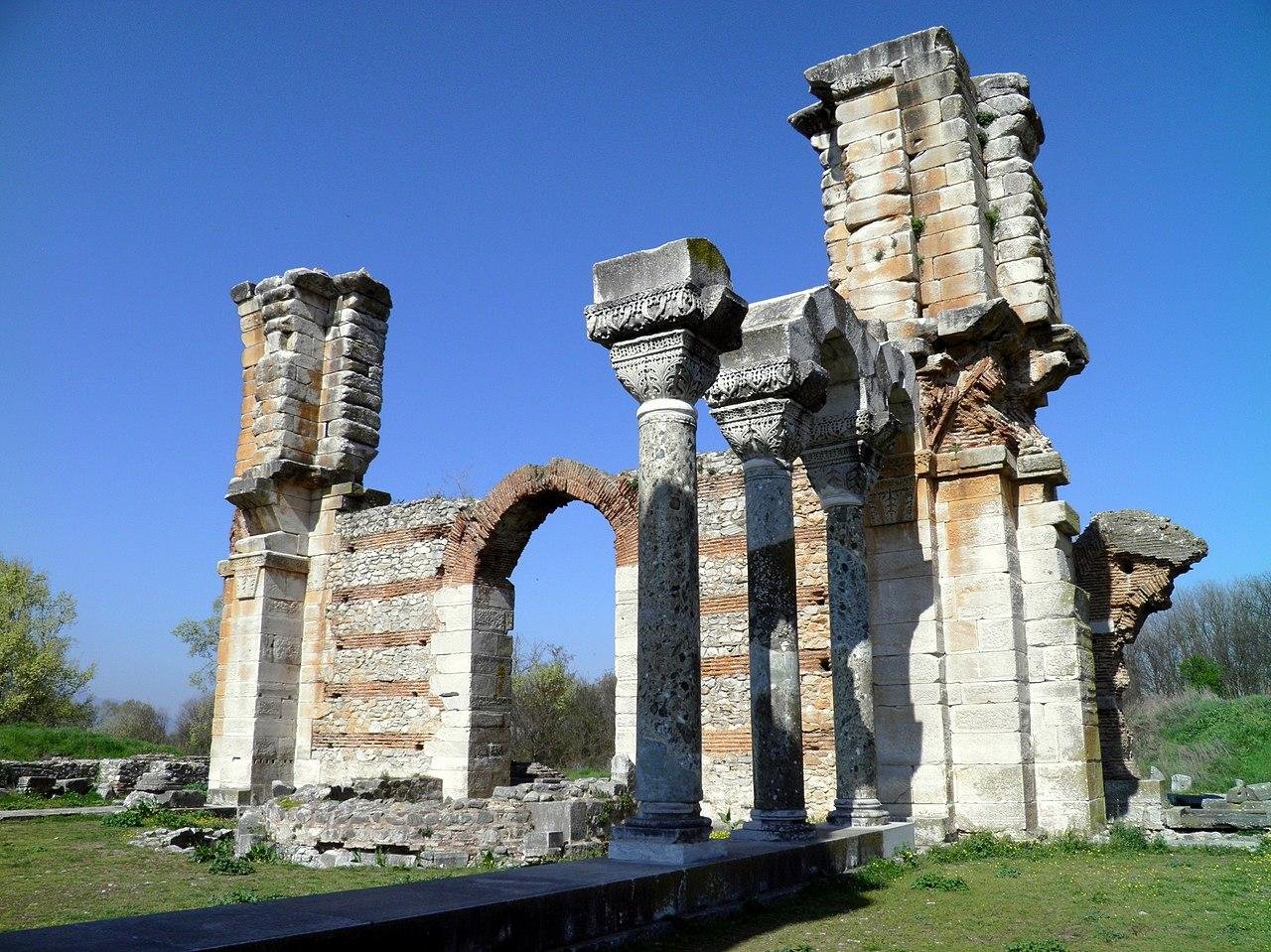A team of the Hebrew University of Jerusalem and international archaeologists has uncovered a rare 1,720-year-old Roman boundary stone at the Tel Abel Beth Maacah dig near Metula in northern Israel. The basalt slab, which is inscribed in Greek, provides a very rare glimpse into the administrative organization of the Roman Empire during the Tetrarchy period (293–306 CE), when the empire was governed by two senior emperors, Augusti, and two junior colleagues, Caesares.
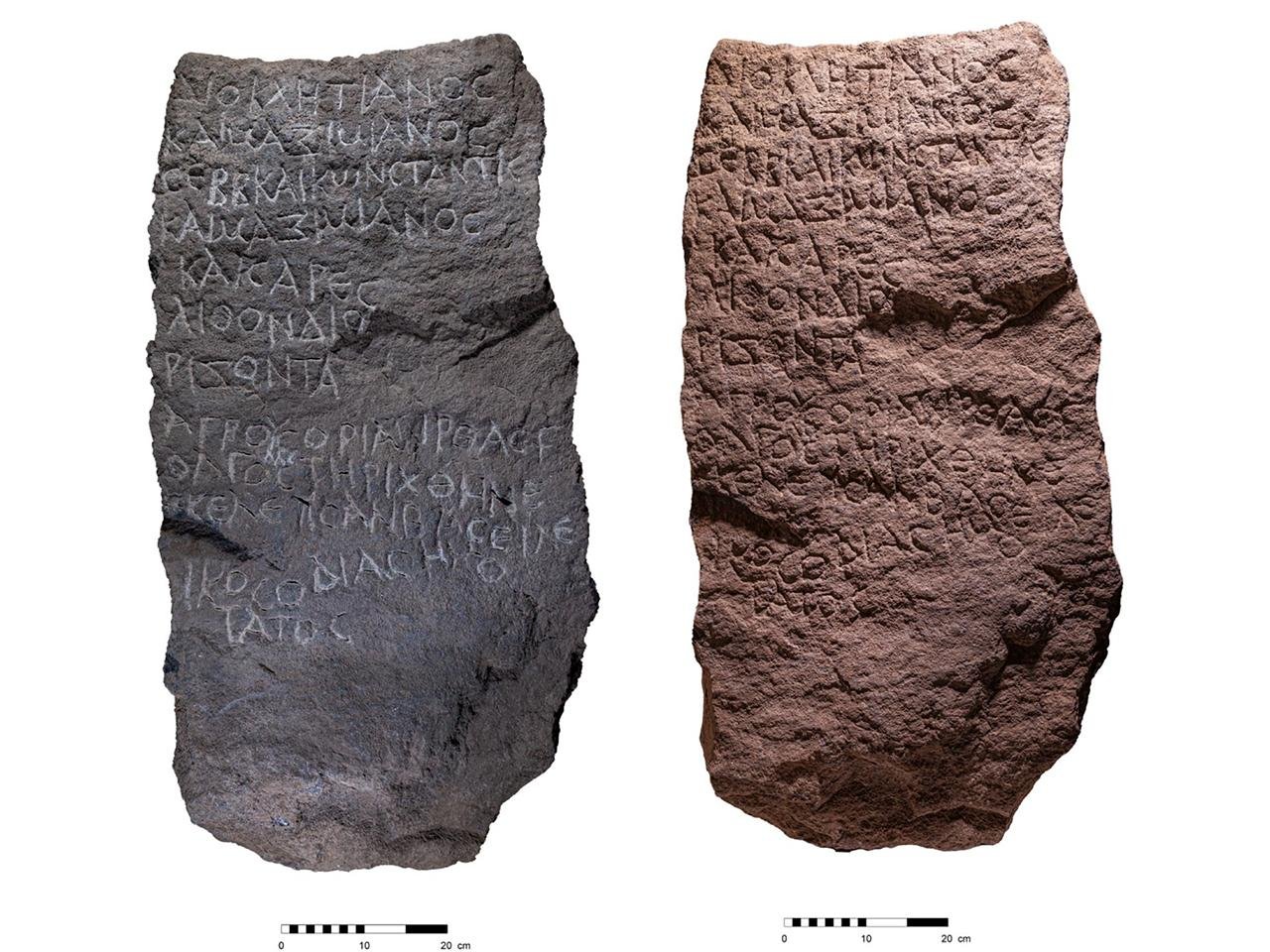 The inscription, with and without highlighting of the letters. Credit: T. Rogovski
The inscription, with and without highlighting of the letters. Credit: T. Rogovski
The inscription reads as follows: “Diocletian and Maximian, the Augusti, and Constantius and Maximian, the Caesars, ordered the placement of this stone marking the boundaries of the fields of the settlements of Tirathas and Golgol. Made under the supervision of Basiliakos.” Scholars have stated that the inscription introduces two new village names, Tirathas and Golgol, and mentions for the first time Basiliakos, an imperial tax official.
This stone was repurposed, having been reused in a structure of the Mamluk period, as a grave covering. Despite its secondary use, it remains well-preserved and measures 101 centimeters high. According to scholars, its original purpose was to delineate agrarian borders between villages, part of the reforms by Emperor Diocletian, aimed at standardizing taxation and establishing clarity regarding land ownership.
The Tirathas and Golgol villages named in the inscription are equated with places recorded in the 19th-century surveys of Western Palestine; their presence on the stone testifies to the reach of Roman administrative control in the northern Hula Valley, where more than 20 similar boundary stones have been found.
The concentration of such markers in the region suggests that the Roman Empire brought an elaborate mechanism of administrative control into the region, especially to the areas of the small independent landowners’ districts. Such reforms eased the mechanism of taxation and introduced stability to this area but also placed economic pressure on the rural population. The local populations suffered because of these reforms, as attested by the Jerusalem Talmud, compiled in Galilee during this time.
The excavation at Tel Abel Beth Maacah is being conducted under the direction of Professors Naama Yahalom-Mack and Nava Panitz-Cohen of the Hebrew University Insтιтute of Archaeology and Professor Robert Mullins of Azusa Pacific University. The site, located atop an Iron Age fortress, has yielded artifacts from various periods.
The Roman Tetrarchy, insтιтuted by Diocletian, was his response to the growing size and complexity of the empire. By dividing governance among four rulers, the system sought to enforce fiscal and territorial reforms, which included the creation of boundary stones as a means of regulating land ownership.
The findings have been published in the Palestine Exploration Quarterly, cementing the significance of the discovery in the historical geography and socioeconomic history of the Roman Near East.
More information: Ecker, A., & Leibner, U. (2025). ‘Diocletian oppressed the inhabitants of Paneas’ (ySheb. 9:2): A New Tetrarchic boundary stone from Abel Beth Maacah. Palestine Exploration Quarterly, 1–13. doi:10.1080/00310328.2024.2435218
